Photos over the years convey College’s attitudes toward disaster
October 23, 2020
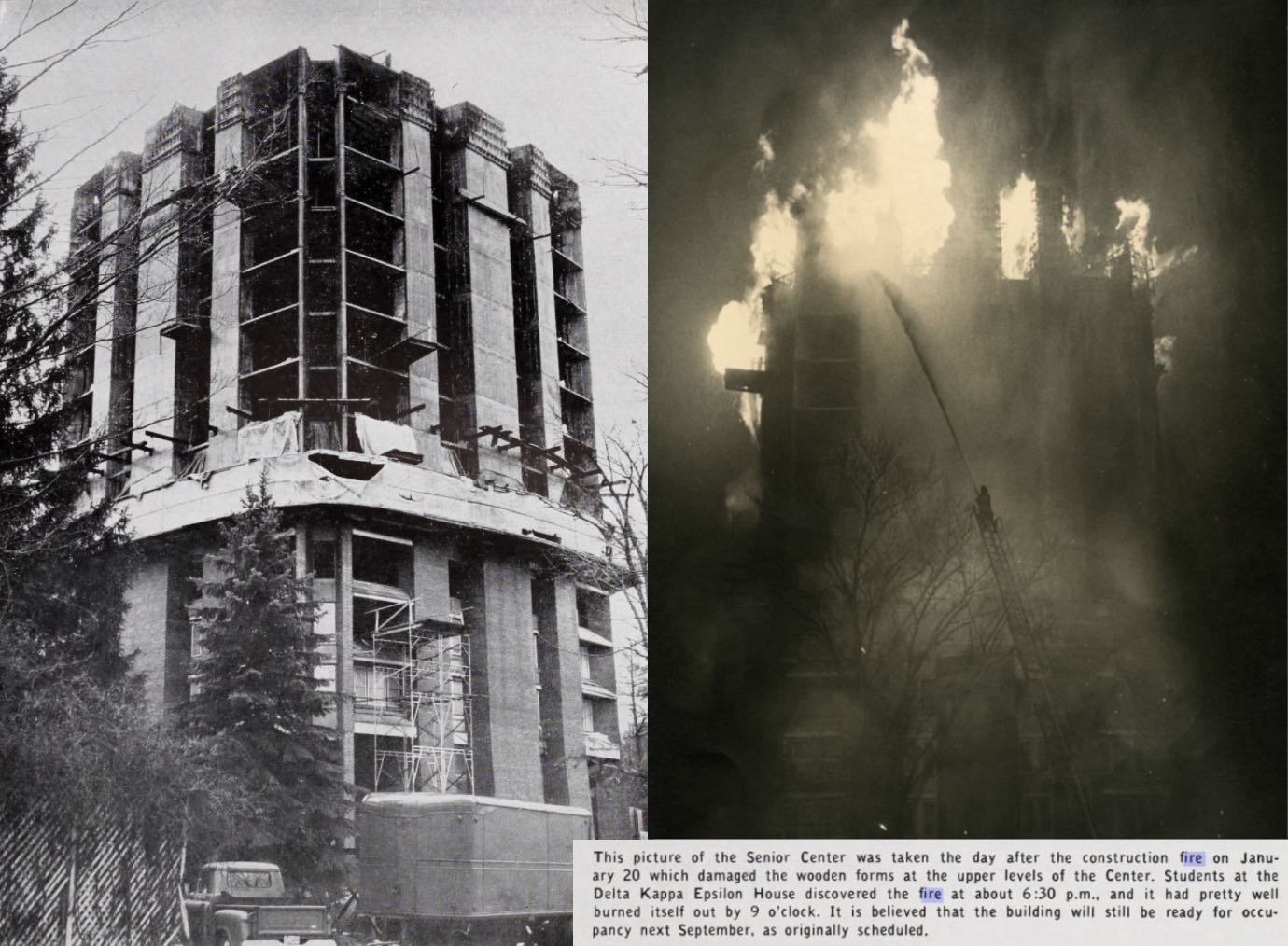 LEFT: Unknown photographer, Bowdoin College Alumni Magazine, Volume 38 (1963-1964); RIGHT: Unknown photographer, courtesy of the Bowdoin College Special Collections and Archives.
LEFT: Unknown photographer, Bowdoin College Alumni Magazine, Volume 38 (1963-1964); RIGHT: Unknown photographer, courtesy of the Bowdoin College Special Collections and Archives.Bowdoin College Alumni Magazine text reads:
“This picture of the Senior Center was taken the day after the construction fire on January 20 which damaged the wooden forms at the upper levels of the Center. Students at the Delta Kappa Epsilon House discovered the fire at about 6:30 p.m., and it had pretty well burned itself out by 9 o’clock. It is believed that the building will still be ready for occupancy next September, as originally scheduled.”
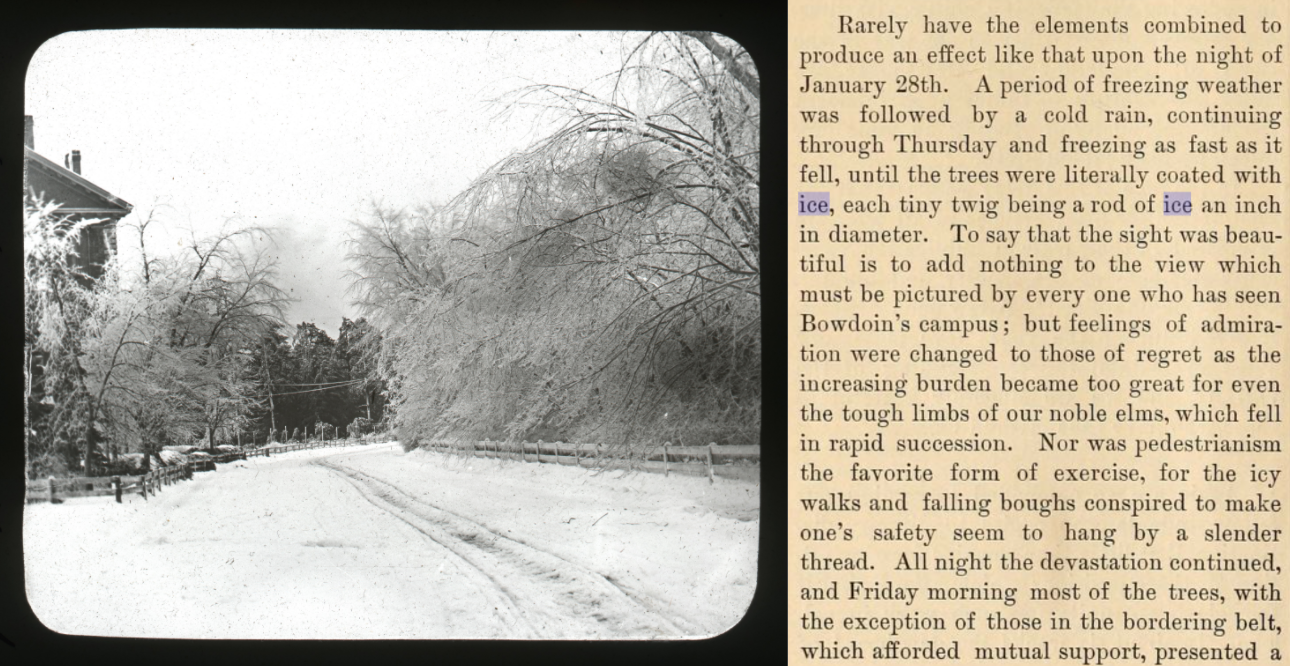 LEFT: Photograph by Leslie A. Lee, courtesy of the Bowdoin College Special Collections and Archives; RIGHT: From the Bowdoin Orient, Volume 15 no. 12. Article author unknown.
LEFT: Photograph by Leslie A. Lee, courtesy of the Bowdoin College Special Collections and Archives; RIGHT: From the Bowdoin Orient, Volume 15 no. 12. Article author unknown.Bowdoin Orient text reads:
“Rarely have the elements combined to produce an effect like that upon the night of January 28th. A period of freezing weather was followed by a cold rain, continuing through Thursday and freezing as fast as it fell, until the trees were literally coated with ice, each tiny twig being a rod of ice an inch in diameter. To say that the sight was beautiful is to add nothing to the view which must be pictured by every one who has seen Bowdoin’s campus; but feelings of admiration were changed to those of regret as the increasing burden became too great for even the tough limbs of our noble elms, which fell in rapid succession. Nor was pedestrianism the favorite form of exercise, for the icy walks and falling boughs conspired to make one’s safety seem to hang by a slender thread. All night the devastation continued…”
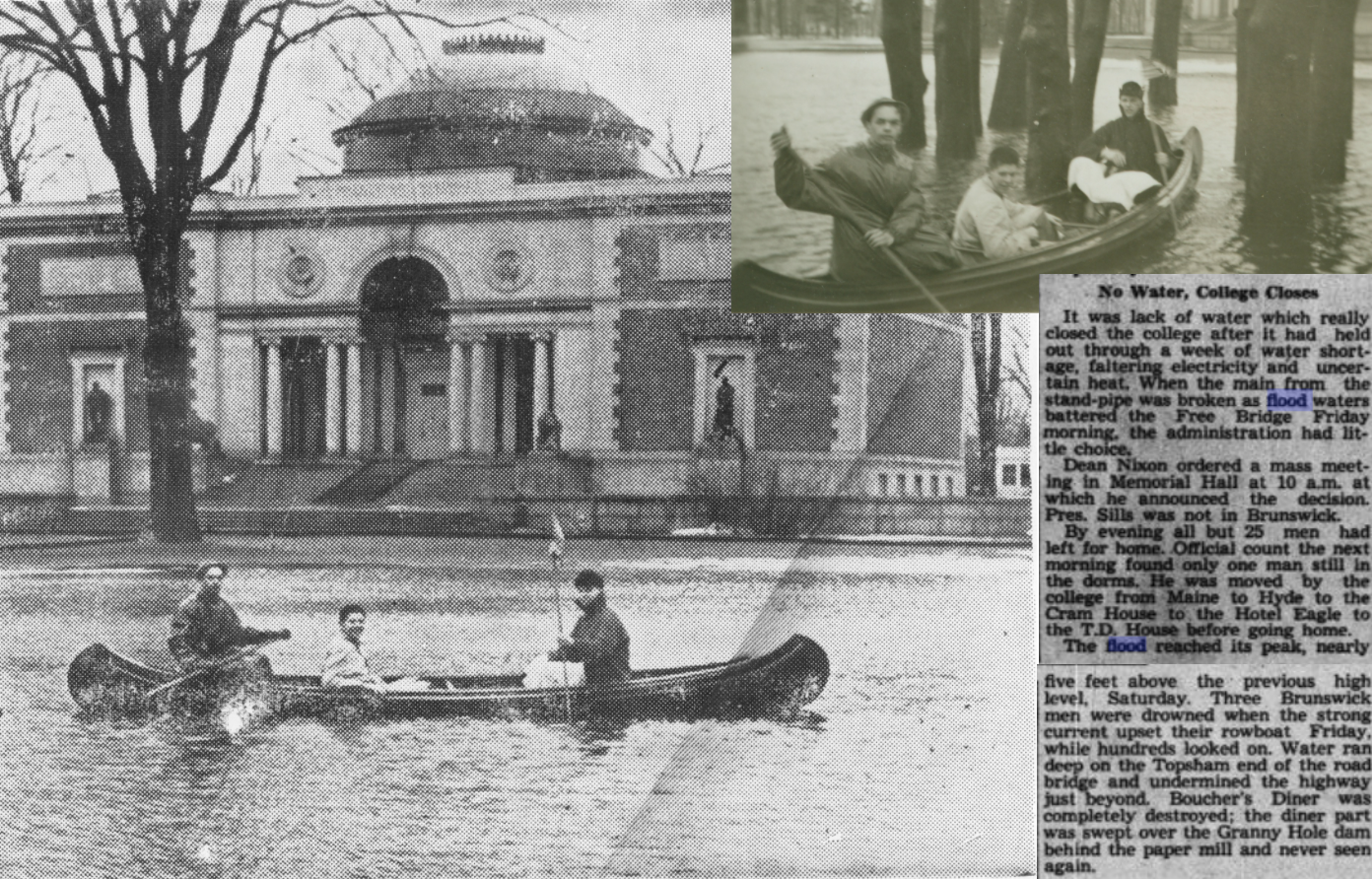 PHOTOS: Unknown photographer, courtesy of the Bowdoin College Special Collections and Archives; CLIPPING: From the Bowdoin Orient, Volume 66 no. 1. Article author unknown.
PHOTOS: Unknown photographer, courtesy of the Bowdoin College Special Collections and Archives; CLIPPING: From the Bowdoin Orient, Volume 66 no. 1. Article author unknown.Bowdoin Orient text reads:
“It was lack of water which really closed the college after it had held out through a week of water shortage, faltering electricity and uncertain heat. When the main from the stand-pipe was broken as flood waters battered the Free Bridge Friday morning, the administration had little choice.
Dean Nixon ordered a mass meeting in Memorial Hall at 10 a.m. at which he announced the decision. Pres. Sills was not in Brunswick.
By evening all but 25 men had left for home. Official count the next morning found only one man still in the dorms. He was moved by the college from Maine to Hyde to the Cram House to the Hotel Eagle to the T.D. House before going home.
The flood reached its peak, nearly five feet above the previous high level, Saturday. Three Brunswick men were drowned when the strong current upset their rowboat Friday, while hundreds looked on. Water ran deep on the Topsham end of the road bridge and undermined the highway just beyond. Boucher’s Diner was completely destroyed; the diner part was swept over the Granny Hole dam behind the paper mill and never seen again.”
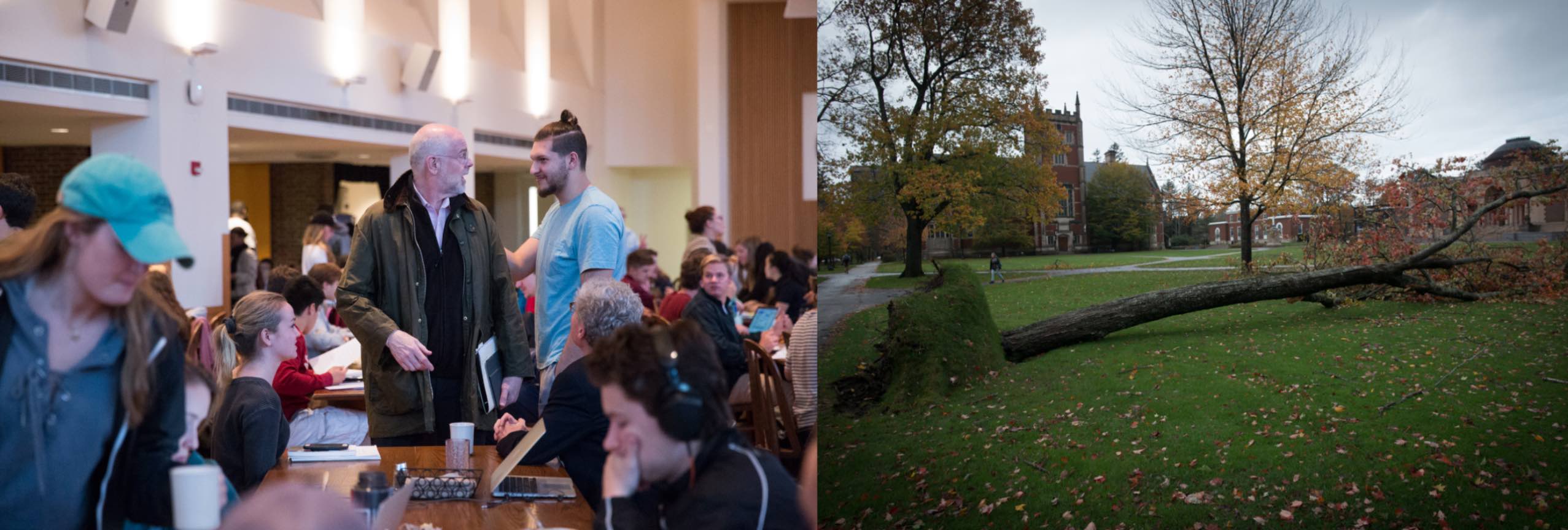 LEFT: Photograph by Ann Basu ’20, former photographer for the Bowdoin Orient; RIGHT: Photograph by Michele Stapelton, courtesy of the Bowdoin College News Archive.
LEFT: Photograph by Ann Basu ’20, former photographer for the Bowdoin Orient; RIGHT: Photograph by Michele Stapelton, courtesy of the Bowdoin College News Archive.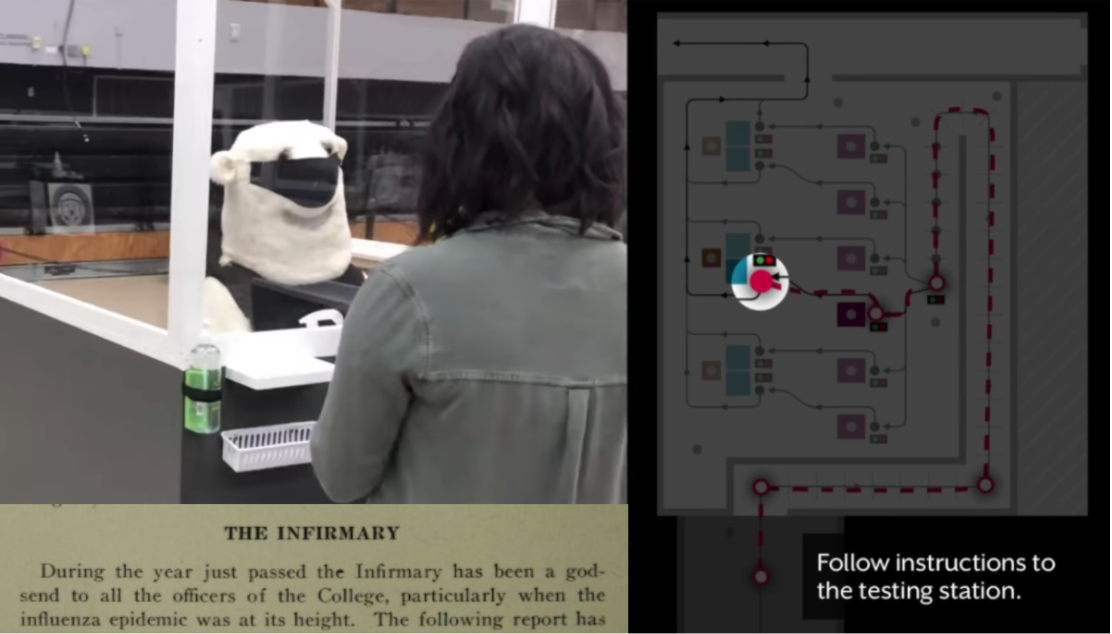 PICTURE: Unknown photographer, courtesy of the Bowdoin College Instagram (@bowdoincollege); CLIPPING: From the Bowdoin College Bulletin no. 92: Report of the President.
PICTURE: Unknown photographer, courtesy of the Bowdoin College Instagram (@bowdoincollege); CLIPPING: From the Bowdoin College Bulletin no. 92: Report of the President.Report of the President text reads:
“During the year just passed the Infirmary has been a god-send to all the officers of the College, particularly when the influenza epidemic was at its height…”
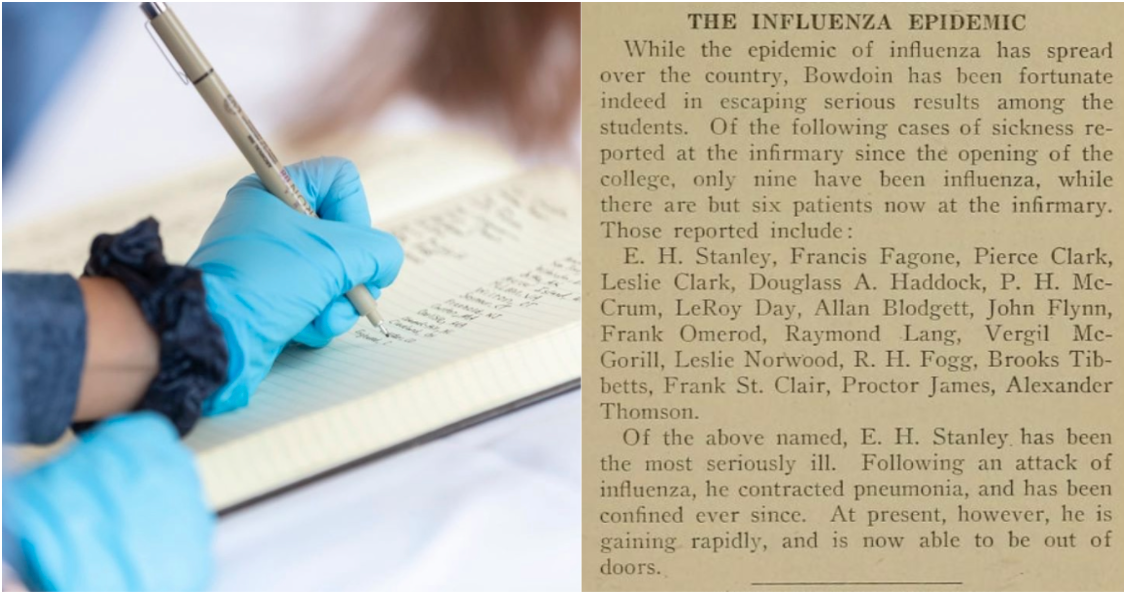 LEFT: Unknown photographer, courtesy of Bowdoin College Instagram (@bowdoincollege); RIGHT: From the Bowdoin Orient, Volume 48 no. 10. Article author unknown.
LEFT: Unknown photographer, courtesy of Bowdoin College Instagram (@bowdoincollege); RIGHT: From the Bowdoin Orient, Volume 48 no. 10. Article author unknown.Bowdoin Orient text reads:
“While the epidemic of influenza has spread over the country, Bowdoin has been fortunate indeed in escaping serious results among the students. Of the following cases of sickness reported at the infirmary since the opening of the college, only nine have been influenza, while there are but six patients now at the infirmary. Those reported include:
E. H. Stanley, Francis Fafone, Pierce Clark, Leslie Clark, P. H. McCrum, LeRoy Day, Allan Blodgett, John Flynn, Frank Omerod, Raymond Lang, Vergil McGorill, Leslie Norwood, R. H. Fogg, Brooks Tibetts, Frang St. Clair, Proctor James, Alexander Thomson.
Of the above named, E. H. Stanley has been the most seriously ill. Following an attack of influenza, he contracted pneumonia, and has been confined ever since. At present, however, he is gaining rapidly, and is now able to be out of doors.”

Comments
Before submitting a comment, please review our comment policy. Some key points from the policy: